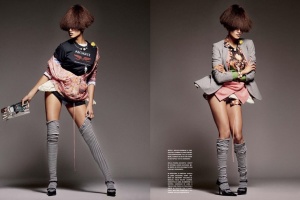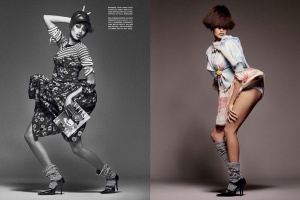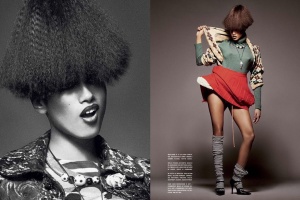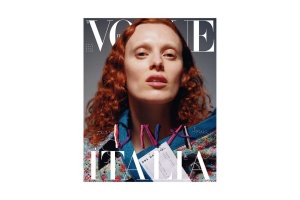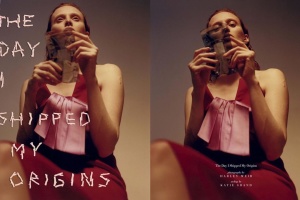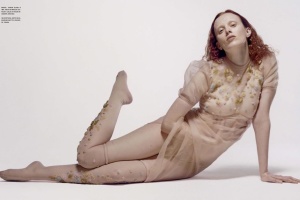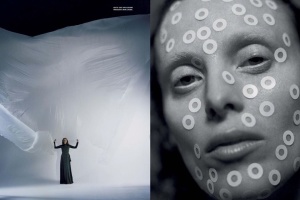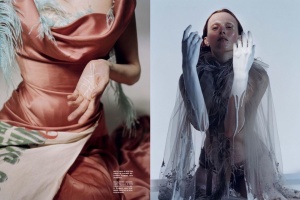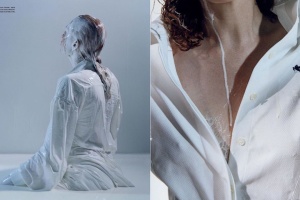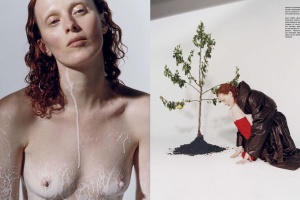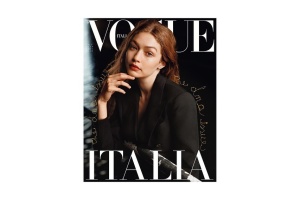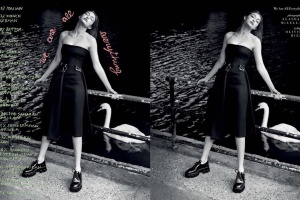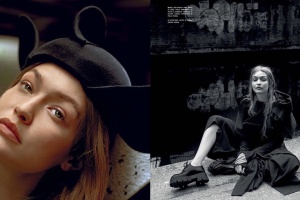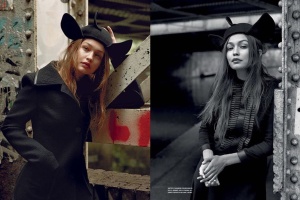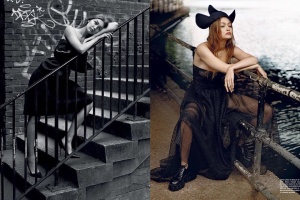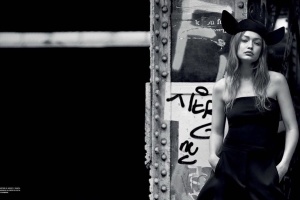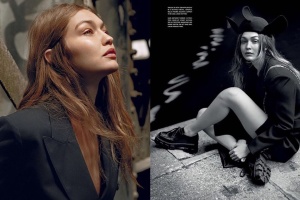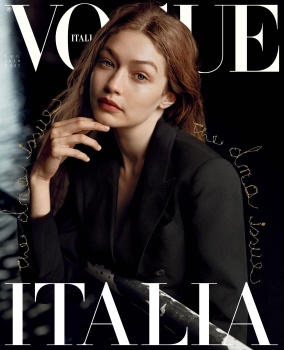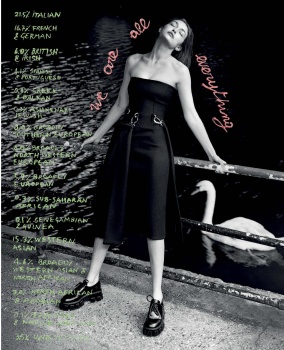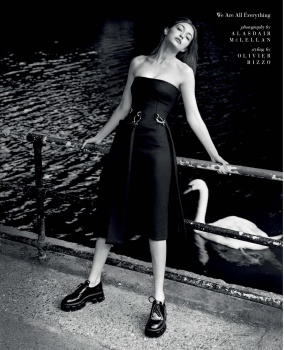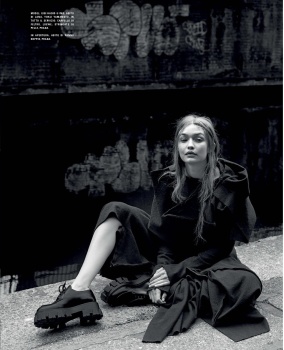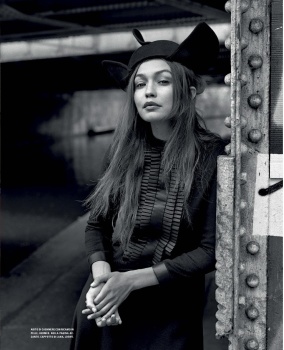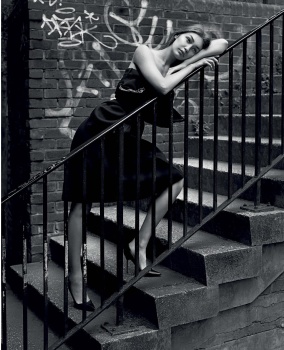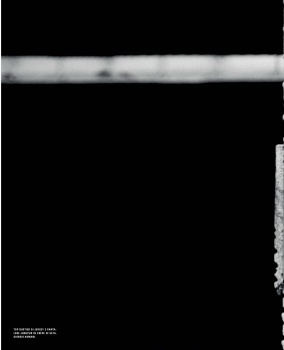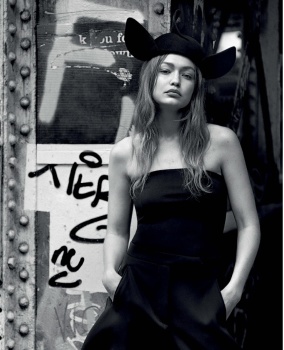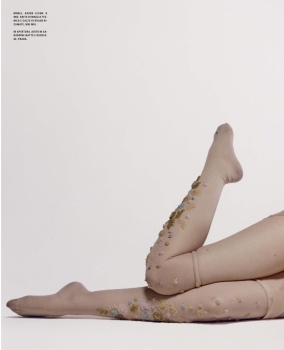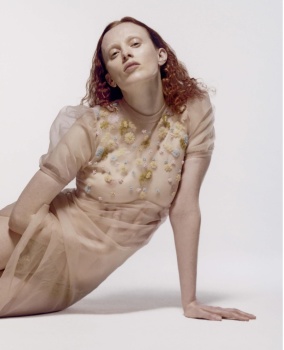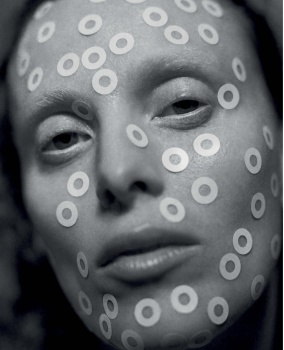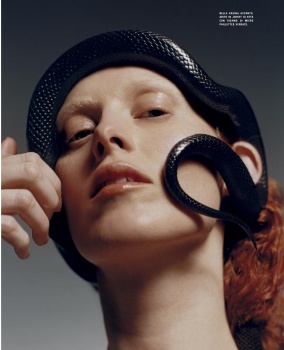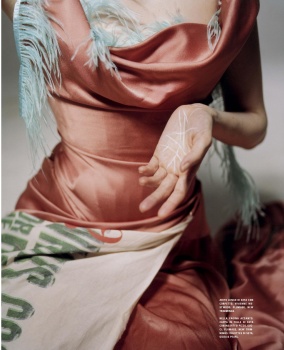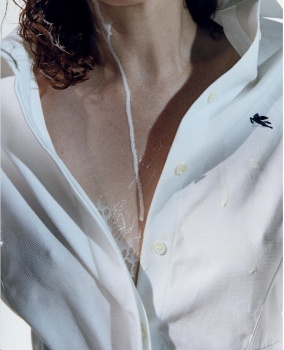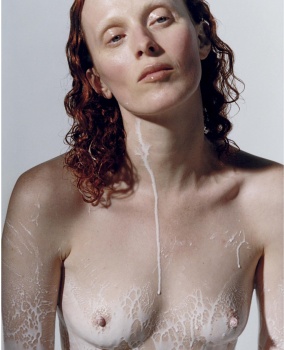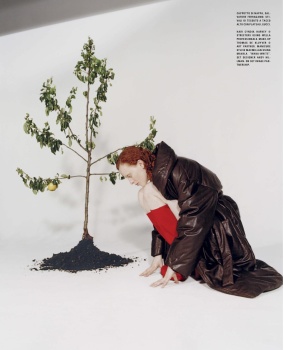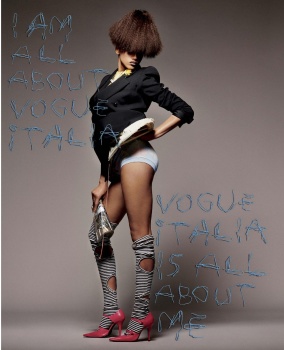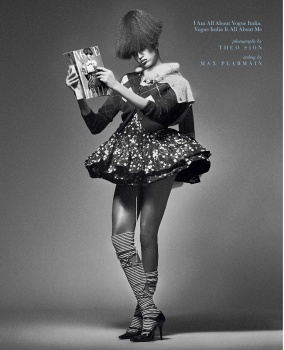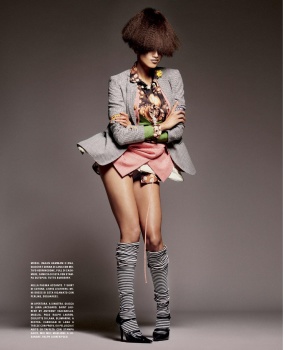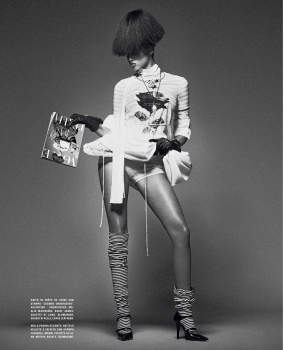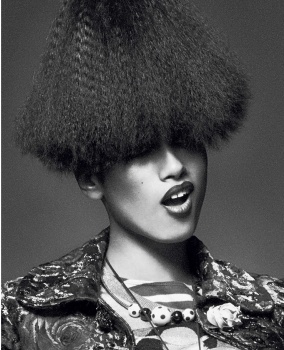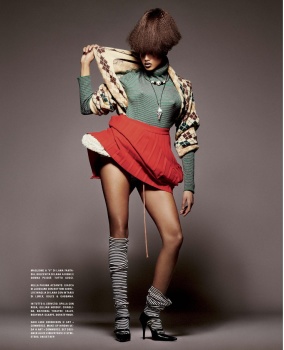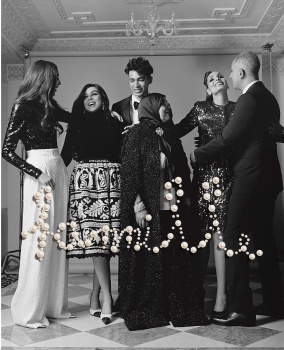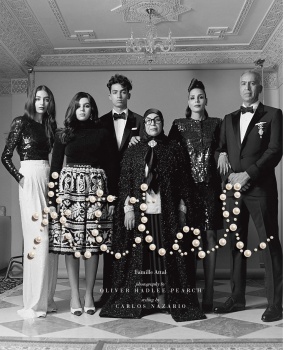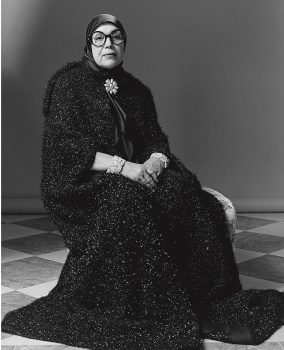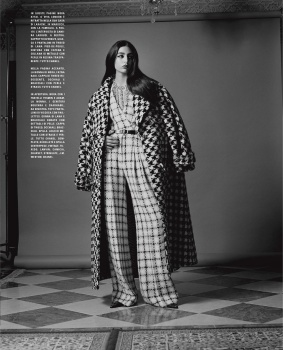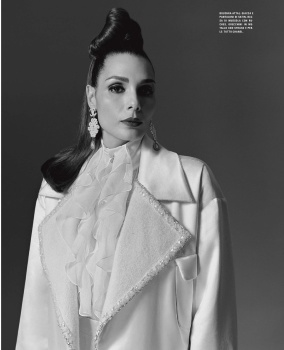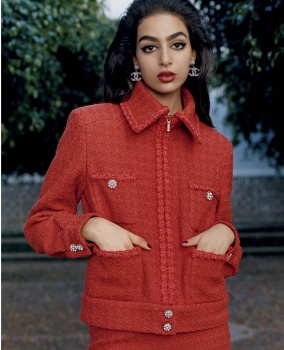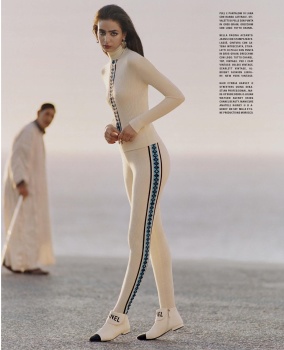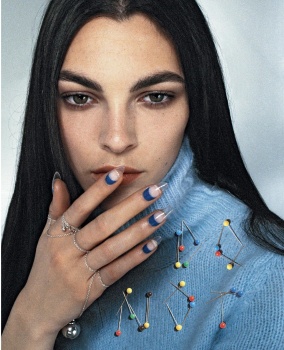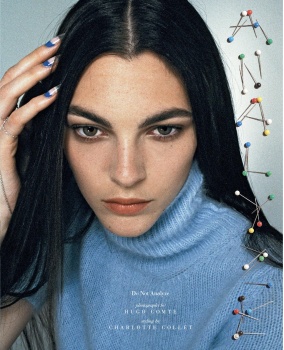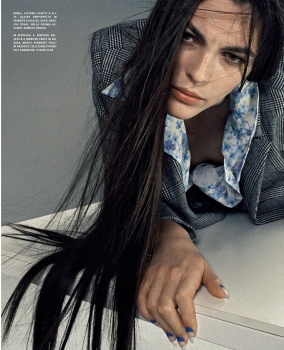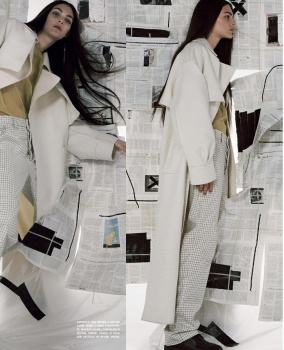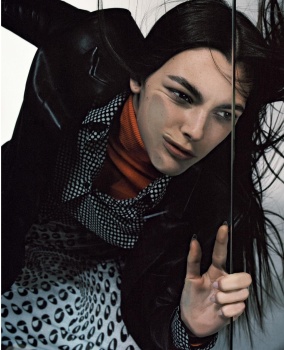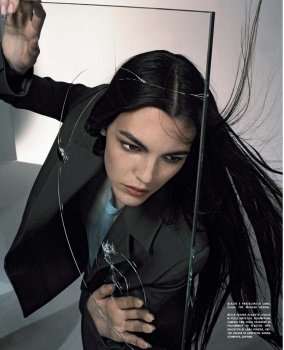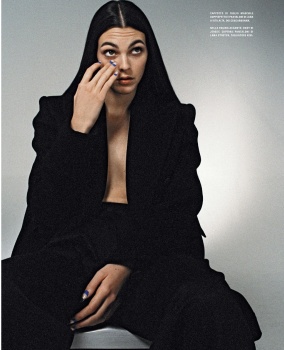-
MODERATOR'S NOTE: Please can all of theFashionSpot's forum members remind themselves of the Forum Rules. Thank you.
You are using an out of date browser. It may not display this or other websites correctly.
You should upgrade or use an alternative browser.
You should upgrade or use an alternative browser.
Vogue Italia July 2019 : The 'DNA' Issue by Alasdair McLellan, Theo Sion & Harley Weir
- Thread starter anaa lpz
- Start date
GivenchyHomme
Well-Known Member
- Joined
- Sep 3, 2009
- Messages
- 5,390
- Reaction score
- 4,985
Poor Gigi. Sis cannot pose to save her life!
phungnam96
Well-Known Member
- Joined
- Jul 7, 2011
- Messages
- 1,204
- Reaction score
- 883
Pure Trash.
MON
Well-Known Member
- Joined
- Jun 20, 2009
- Messages
- 12,635
- Reaction score
- 5,188
Pure Trash.
Don't compare it to trash!
Trash has seen more DNA than this issue.
Trash is better
MagFan
Well-Known Member
- Joined
- May 16, 2006
- Messages
- 4,393
- Reaction score
- 1,912
Editors letter
vogue.itSince everyone knows that at the end of one journey there’s always another journey to begin, with this issue we start a new chapter in the history of Vogue Italia. The world is changing at an ever-faster pace, and a magazine like ours must do the same, given that it has innovation indelibly inscribed in its DNA. Working on this project with the new creative director Ferdinando Verderi, we imagined the various floors that compose our building, and how we could make them more welcoming and functional.
As always, the first and most important floor is home to fashion, with its power to comment on current events. The same floor also hosts photography, which this magazine has always chosen as a universal language to portray our present times, drawing on the vision of the best photographers and editors. As well as the usual spaces (nobody dedicates a higher percentage of pages to fashion shoots), the photographic medium has inspired two new regular features: each month Vince Aletti will describe an image that has influenced fashion “from the outside”; and Giovanni Montanaro will write a short story freely based on a picture selected from works by the young talents of Photo Vogue.
The second floor is dedicated to quality writing. It takes time, space, skill and energy (also of the economic variety) to have high-value texts. This is why we’re more convinced than ever that they make the difference, as much as or perhaps even more than great photos. We embarked on this path two years ago, and today it has reached a new level of awareness. A great example is the piece written for Vogue Italia by Bret Easton Ellis. Twenty years after his best-seller Glamorama, Ellis returns to the fashion world to tell us about its faults and hypocrisies in the age of social media, millennials, inclusivity and diversity. It won’t be a pleasure to hear, but it’s useful because it raises certain questions – both big and small – that cannot be dismissed. Are we sure that democratising fashion doesn’t mean killing the dream? Are we convinced that the intimacy suggested by Instagram isn’t actually a swindle, and an antidote to desire? And how would a true disrupter like a young Alexander McQueen be received today, with his provocative references to sex and gore?
The third floor accommodates a new graphic look. There are three operative words: respect – for both images and texts; hierarchy – not all elements on the page have equal importance; and flexibility – there are no fixed patterns, so the photos can be large or small, the texts long or minimal, because the contents must determine the space. As we’re all now used to reading on screens, Verderi has conceived a layout that reproduces some screen-like mechanisms: the magazine’s opening pages, and those of the Beauty section, are joined together as if the reader could scroll through them (horizontally like on a tablet, or vertically like on a smartphone). This creates an uninterrupted flow of meaning, with an element of text or image always “linking” to the next page. Strengthened by its constantly expanding digital ecosystem, today Vogue Italia reasserts all its pride as a print magazine. It does so with a series of handmade interventions (such as the letters on the cover, even the symbols on the horoscope page which resemble small, uniquely designed sculptures!); with reading experiences that recall the enjoyment of a book (see the long reads on the closing pages); and with the magazine’s new type font that always deforms in a different way, so a word’s appearance changes each time it is written.
The fourth floor contains the digital contents, which are destined to become increasingly intertwined with those of the print edition. The digital features are not an afterthought created to promote the magazine. Rather, they are produced at the same time, or even before. You will soon see further examples. Meanwhile, check out #vogueitaliapodcast to listen to the contents of this issue, also in the original English-language versions.
The fifth floor concerns the fact that (often but not always) the magazine will have an underlying theme. For this issue it’s DNA. With its ethical and aesthetic implications, this topic is not only relevant for fashion (some brands follow their origins, others reinvent them), but also for everyone in general, as demonstrated by the pop phenomenon of affordable tests that allow you to map your genes. In the end, it’s a question of understanding which part of our destiny is already written, and which part we can still decide.
Ultimately, as always, like all magazines, Vogue Italia is worth the stories it tells (with words and pictures) along with the quality of its journalism. And this issue is definitely full of stories. There’s the prophecy that starts off a journey in search of places where humans defy death with science, philosophy, faith or courage. There’s a model who discovers the peculiar voyages of her genetic heritage, and another who has always known where home is. There’s a family portrait in a land of earth and wind; the marriage of a princess before 48 crowned heads. And there’s the incredible tale of a girl who gazed at the stars in her house in the middle of nowhere, and went on to become a famous model, yet would only eventually find true happiness after transitioning – and returning to fashion’s runways on the menswear circuit. He explains how he came to realise that the world is, after all, what each of us decides to make of it.
Vitamine W
Well-Known Member
- Joined
- Oct 15, 2010
- Messages
- 2,948
- Reaction score
- 921
Putting that wig on Imaan is an atrocious crime against humanity which means I might have to set Theo Sions studio on fire in order to retrieve universal karmic balance again.
WilliamsLe010919
Well-Known Member
- Joined
- May 26, 2010
- Messages
- 645
- Reaction score
- 152
by DNA they mean nepotism?
Alien Sex Friend
Well-Known Member
- Joined
- Oct 26, 2005
- Messages
- 8,596
- Reaction score
- 1,433
Karen cover as well as Imaan’s are looking like made by the same c-rated photographer like Michelangelo di battista or Liz Collins...
Morgane07
Well-Known Member
- Joined
- Aug 30, 2018
- Messages
- 354
- Reaction score
- 279
Poor Imaan deserved better - between the wig, styling and having to hold the magazine they didn't make it easy for her. It's a shame because I quite like the only shot where we can see her eyes.
Quite a boring issue overall so far.
Quite a boring issue overall so far.
Miss Dalloway
Well-Known Member
- Joined
- Mar 3, 2006
- Messages
- 25,698
- Reaction score
- 1,003
This is NOT the way you want to usher in "New Era", but then it's just another gimmick by just another Vogue edition!
helmutnotdead
Well-Known Member
- Joined
- Jan 29, 2018
- Messages
- 1,926
- Reaction score
- 5,024
I'm just so tired of this f*cking boring guy.
RedSmokeRise
Well-Known Member
- Joined
- May 31, 2015
- Messages
- 1,737
- Reaction score
- 1,132
Why did they have to do Imaan dirty like this lmao.
Benn98
Well-Known Member
- Joined
- Aug 6, 2014
- Messages
- 42,532
- Reaction score
- 20,630
Benn98
Well-Known Member
- Joined
- Aug 6, 2014
- Messages
- 42,532
- Reaction score
- 20,630
Similar Threads
- Replies
- 36
- Views
- 12K
- Replies
- 11
- Views
- 1K
- Replies
- 14
- Views
- 4K
- Replies
- 105
- Views
- 38K
- Replies
- 5
- Views
- 5K
Users who are viewing this thread
Total: 1 (members: 0, guests: 1)



